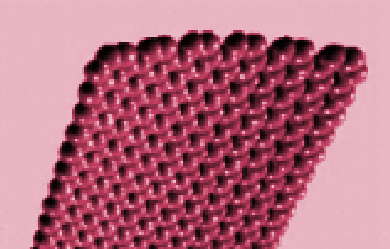Rice University scientists have shown theoretically that removing hydrogen atoms at strategic points on a graphene sheet can lead to a form of graphene bearing quantum dots on its surface. Graphene, a semiconductor, is essentially a single sheet of graphite, covered on both sides with valency-filling hydrogen atoms it forms graphene, an insulator.
The calculations suggest that removing “islands” of hydrogen from both sides of a graphane sheet will leave a well. The researchers say this could be exploited in creating arrays of dots for building tiny transistors or semiconductor lasers.
- Vacancy Clusters in Graphane as Quantum Dots
A. K. Singh, E. S. Penev, B. I. Yakobson,
ACS Nano 2010, 4.
DOI: 10.1021/nn1006072




